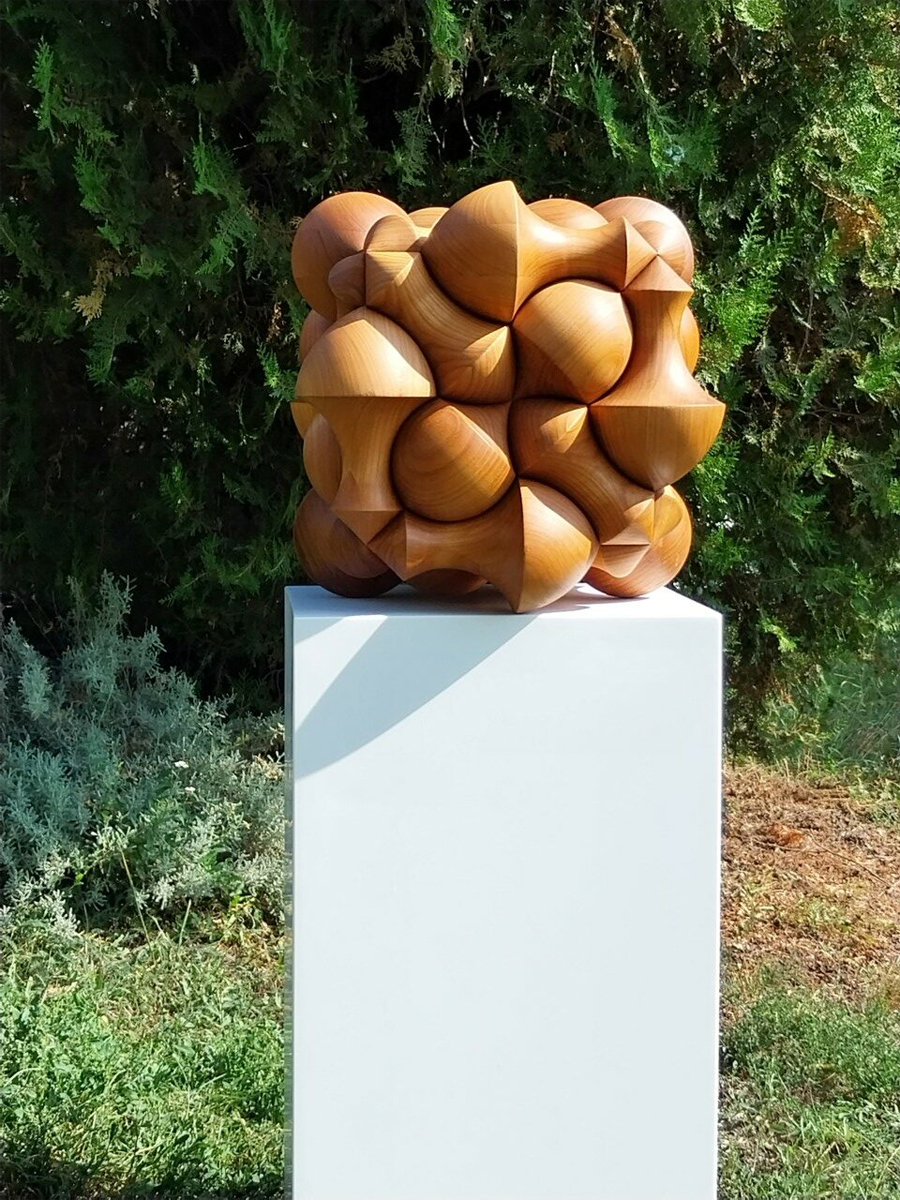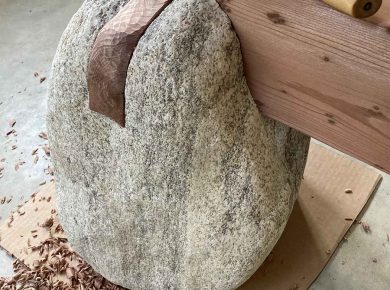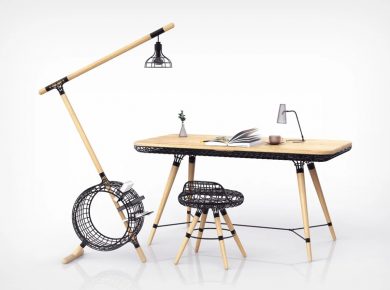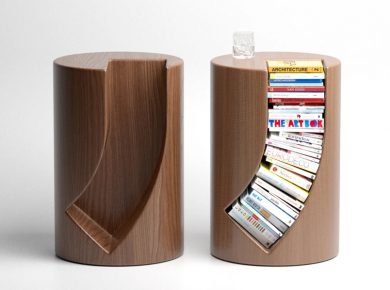
Hungarian designer László Tompa has long stood at the intersection of art, mathematics, and craftsmanship. His latest creation, the Illusion Box , redefines what a sculptural object can be. At first glance, it appears to be a smooth wooden monolith, its surface alive with gentle curves that catch and shift with the light. There is something hypnotic in the way the grid flows – a rhythm of intersecting forms that seem to move even when perfectly still. Yet beneath this sense of sculptural calm lies a hidden secret: a concealed compartment that transforms the artwork into a functional object, blurring the boundaries between sculpture and utility.

Tompa’s path toward wooden geometry was anything but linear. Trained originally in ceramics and tile design, he began his creative journey by exploring modular wall tiles built from triangular and square-based meshes. These early experiments were mathematical in nature yet highly tactile, testing how repetition and symmetry could form complex visual systems. Over time, his fascination with three-dimensional patterning drew him toward sculpture. Wood, with its combination of warmth and precision, provided the perfect medium for transferring these geometric ideas into physical form.

The designer’s conceptual framework revolves around the sphericon – a fascinating solid formed by two identical surfaces joined seamlessly. A sphericon rolls in a non-repeating pattern, its continuous geometry creating a paradox of motion and stability. Through years of experimentation, Tompa discovered he could multiply this logic, producing composite forms that retained the sphericon’s endless continuity. When rotated 180 degrees, these evolved bodies mirror themselves perfectly, creating a sense of symmetry that feels both rational and poetic. This became the grammar of his design language – geometry not as constraint, but as expressive movement captured in wood.

The Illusion Box is a masterclass in this language. Crafted from cherry wood, the piece consists of thirty-six turned elements that interlock with remarkable precision. Each segment begins as a CNC-cut template, defining the outline of the curve. From there, Tompa uses a copy lathe – a traditional turning tool – to shape every element into a unique revolution. The copy lathe allows him to achieve both uniformity and individuality: each component repeats a pattern, yet none are mechanically identical. After shaping, every piece is hand-fitted and fixed in place, forming a surface so fluid that the joins become invisible. The resulting structure flows without interruption, concealing its internal complexity from view.

What makes the Illusion Box so compelling is its dual nature. It stands proudly as a piece of art – an optical illusion that toys with perception – while also functioning as a container. Its hidden compartment, accessible only through careful disassembly, invites curiosity and interaction. The act of opening it becomes an intimate dialogue between viewer and object, as if geometry itself is revealing its secrets one layer at a time.
In many ways, Tompa’s work continues the Hungarian design tradition of blending fine craftsmanship with abstract logic. He transforms mathematical order into emotion, using geometry not as formula but as story. Every curve, every connection, reflects an obsession with balance – between chaos and structure, intuition and reason. His sculptures, though static, carry an implied sense of movement, as if their geometry were frozen mid-transformation.

The Illusion Box embodies this philosophy with quiet precision. It is more than a decorative object; it’s a meditation on perception. From a distance, it captivates the eye with its rhythmic surface. Up close, it reveals a dialogue between positive and negative space, between what is seen and what is hidden. To dismantle it is to understand it – only then does one grasp the magnitude of its craftsmanship, the patience embedded in every turn of the lathe.

Through this creation, László Tompa reminds us that geometry is not merely mathematical – it is emotional, sensory, even mysterious. The Illusion Box challenges the viewer to look beyond the surface, to question the relationship between function and beauty, and to rediscover how structure itself can hold poetry within its form.







